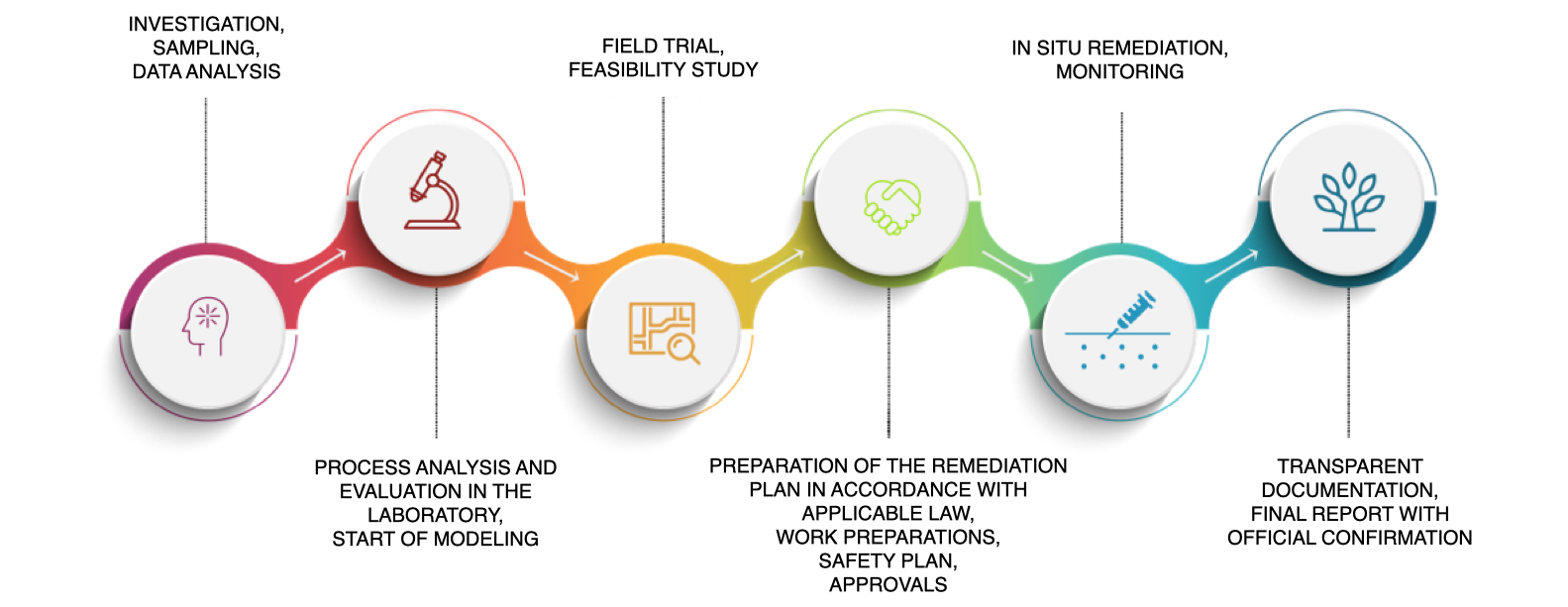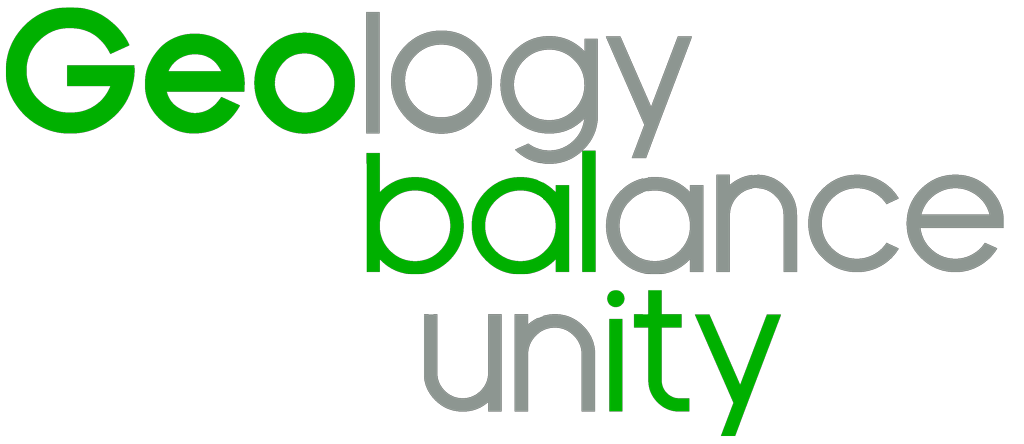
Current Challenges: Soils as a Central Concern
In a constantly changing world characterized by the search for future energy sources, the reduction of CO2-Emissionen und der Sicherung einer ausreichenden Wasserversorgung geprägt ist, tritt eine entscheidende Frage in den Vordergrunddie Entwicklung und Qualität unserer Böden.
Our Focus: Brownfield Remediation through Innovative In-Situ Methods
As a company with a clear focus on brownfield remediation through innovative in-situ remediation, we recognize the urgent need to address the environmental impacts of contaminated soils. Our technical expertise and know-how enable us to develop effective solutions, achieving sustainable restoration of affected areas.
Decarbonization and the protection of natural resources are inherently linked to the state of our soils, and we take pride in contributing to the achievement of these global goals.
Successful Site Remediation
Mit dem Ziel, eine maximale Budget- und Rechtssicherheit zu wahren müssen Umwelt- und Finanzrisiken vermieden bzw. bewältigt werden.
Today, we are able to provide land recycling with a sustainable and successful cost-benefit effect.
Kostenlose Ersteinschätzung innerhalb von 7-10 Tagen
Nutzen Sie unsere kostenlose Ersteinschätzung zur generellen Machbarkeit einer in-situ Sanierung auf Ihrer Liegenschaft.
Auf Basis der uns zur Verfügung gestellten Unterlagen beantworten wir folgende Fragen:
- Ist eine in-situ Sanierung bei dem Objekt grundsätzlich möglich?
- Wie lange dauert die in-situ Sanierung im Vergleich zu anderen Sanierungsverfahren?
- Welche Kosteneinsparungen sind voraussichtlich zu erreichen?
Schematischer Ablauf einer Sanierungsmaßnahme

Our project management at a glance
DEAKTIVIERT
Identification of the Contamination Source
Research
Selection of Participating Companies
Selecting the right companies to be involved in in-situ soil remediation is a crucial step toward successful site remediation. We understand that the quality and expertise of our partners directly impact the end result and are therefore of utmost importance. Through careful selection of participating companies, we ensure that all aspects of remediation run smoothly and meet the highest standards. With our established partnerships, we lay a solid foundation for the success of every site remediation, which we are happy to provide to you.
Overall Management of All Involved Structures
Our team understands the complexity and diverse requirements associated with remediation. As managers responsible for the overall management, we specialize in aligning the various stakeholders, from technical experts to contractors. We ensure that all parties understand their specific roles and responsibilities and work together effectively.
This coordinated approach not only contributes to project efficiency but also minimizes the risk of delays and budget overruns. Our qualified overall management ensures that all aspects of remediation seamlessly fit together, from environmental safety to compliance with legal regulations. We understand that successful site remediation depends not only on technical aspects but also on effective overall control.
Consideration of All Customer and Project-Specific Concerns
Development of a Remediation Concept
Close collaboration with our IBS cooperation partners allows us to unite various perspectives and fields of expertise to find optimal solutions.
Scheduling and Monitoring
As time is a precious commodity, and delays in remediation can have not only financial but also environmental impacts, we rely on detailed scheduling from the outset. This includes consideration of all relevant aspects, from remediation steps to regulatory approval processes.
Continuous monitoring and adjustment of the schedule allow us to flexibly respond to unforeseen events or changing requirements without compromising quality or safety. This proactive approach helps to efficiently and cost-effectively complete the project.
Our experts have the expertise and experience to ensure that scheduling and monitoring play a central role in every site remediation, ensuring not only compliance with deadlines but also the overall success of your project.
Cost Control
From the beginning, we create a clear and detailed budget plan that takes into account all relevant cost factors. Throughout the project, we focus on continuous cost monitoring to ensure that the budget is adhered to. Our experts specialize in cost control as an integral part of every site remediation.
Communication with Authorities
Effective communication with authorities is essential for the success of any site remediation. Compliance with all legal requirements, obtaining necessary permits, and meeting all regulations are integral parts of our service.
Our approach is based on close collaboration with relevant authorities at all levels, whether at the local, regional, or national level. This ensures that all necessary permits for your project are obtained, and all requirements are met.
Risk Management
Quality Assurance
Our responsibility for quality assurance extends across all phases of the project to ensure that environmental, safety, and legal compliance standards are maintained throughout the remediation.
Documentation of All Relevant Information and Proper Archiving
Proper archiving of this information not only ensures project transparency but also meets legal requirements and enables efficient communication with authorities and other stakeholders.
3D Modeling of soil structure for precise site remediation
As part of our comprehensive services for remediating contaminated land, we offer you the technology of 3D modeling of soil structure. This powerful tool allows us to visually represent the hydrogeological structure of your site in a three-dimensional model, making the entire remediation process visually and highly accurately depicted.
The importance of this technology is invaluable. It not only provides project developers but also regulatory authorities with profound insights into the geological characteristics of the subsurface. This promotes a better understanding of the remediation process and enables informed decisions based on solid scientific foundations.
The precise prediction of flow behavior and pollutant spread through this technology allows us to accurately identify potential risks to the environment and human health. Soil structure modeling is, therefore, a valuable tool in planning and implementing remediation measures in the geological subsurface.
Insgesamt können numerische Simulationen dazu beitragen, die Effektivität und Sicherheit von in-situ Sanierungen zu erhöhen, sowie die Risiken für die Umwelt und die menschliche Gesundheit zu minimieren. Sie sind daher ein wichtiges Instrument bei der Planung und Durchführung von Sanierungsmaßnahmen im geologischen Untergrund.
Your Benefits in Detail
Our service for modeling soil structure using a 3D model offers a wide range of benefits that significantly impact the success of your site remediation:


